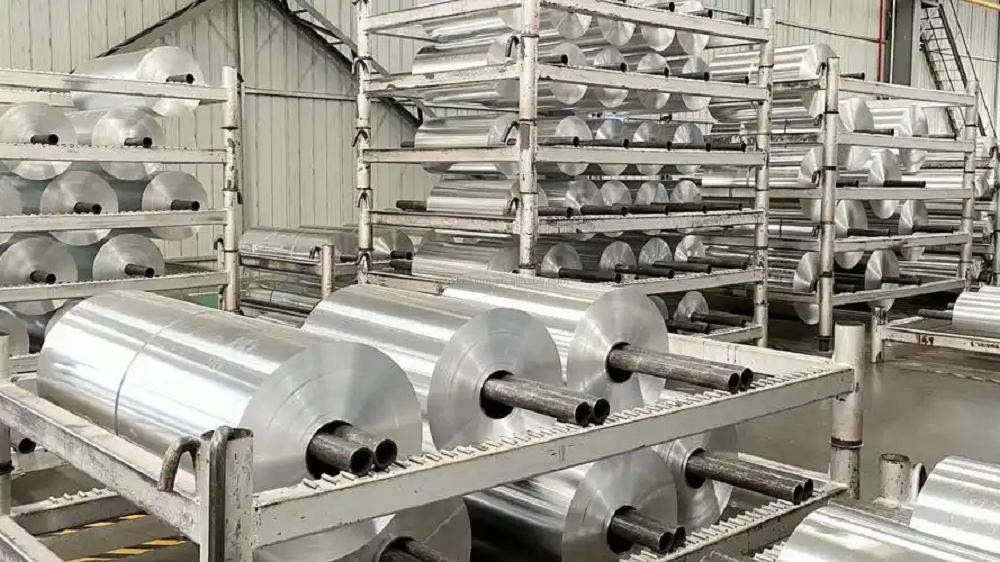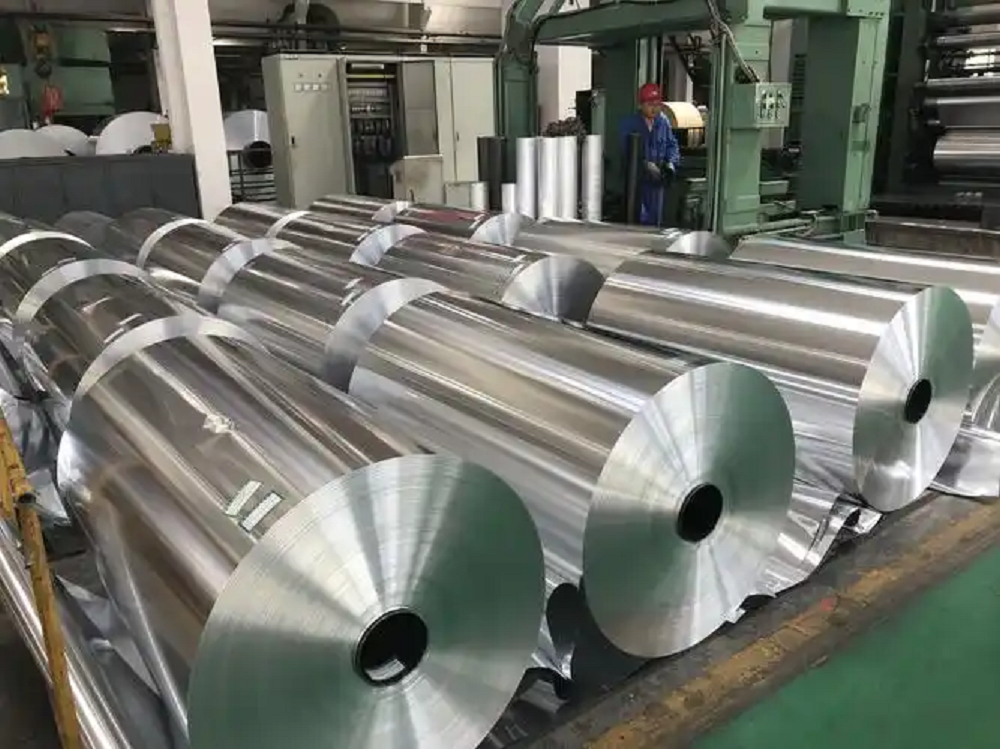Introduction to several key aluminum foil products
(I) Air conditioning foil
Air conditioning foil is a special material for manufacturing heat exchanger fins for air conditioners. The air conditioning foil used in the early days was plain foil. In order to improve the surface performance of plain foil, an anti-corrosion inorganic coating and a hydrophilic organic coating are applied before forming to form a hydrophilic foil. Hydrophilic foil accounts for 50% of the total air conditioning foil, and its use ratio will be further increased. There is also a hydrophobic foil, which makes the fin surface hydrophobic to prevent condensed water from adhering. Since the technology of improving the defrosting property of the surface with hydrophobic foil needs further research, there is very little actual production.
The thickness of air conditioning foil is 0.1mm to 0.15mm. With the development of technology, air conditioning foil has a trend of further thinning. The thickness of Japan’s leading product is 0.09mm. In an extremely thin state, aluminum foil must have good formability, its structure and performance must be uniform, with few metallurgical defects and small anisotropy. At the same time, it requires high strength, good ductility, uniform thickness and good flatness. The specifications and alloys of air-conditioning foil are relatively simple, which is suitable for large-scale production, but its market is highly seasonal. For professional air-conditioning foil manufacturers, it is difficult to solve the contradiction between insufficient supply in the peak season and almost no demand in the off-season.
Due to the strong market demand, the production capacity and technical level of air-conditioning foil in my country have been continuously improved. Now a group of large, medium and small, high, medium and low-end enterprises producing air-conditioning foil have been formed. The product quality of some large enterprises such as North China Aluminum and Bohai Aluminum has basically reached the international advanced level. Due to the domestic overcapacity, the market competition is extremely fierce.

(II) Cigarette packaging foil
my country is the world’s largest cigarette production and consumption country. There are 146 large cigarette factories in my country, with an annual output of 34 million boxes of cigarettes. Basically, cigarette foil packaging is used, of which 30% use spray foil and 70% use rolled aluminum foil. The consumption of rolled aluminum foil is 35,000 tons. With the enhancement of people’s health awareness and the impact of foreign imported cigarettes, the growth of cigarette foil demand has slowed down significantly and is expected to increase slightly. Cigarette packaging foil accounts for 70% of the total double-zero foil in my country. There are two or three domestic enterprises that can produce high-quality cigarette foil, and their technical level is comparable to the international level, but the overall quality of domestic cigarette foil is still somewhat behind the international level.
(III) Decorative foil
Decorative foil is a decorative material applied in the form of aluminum-plastic composite, which takes advantage of the good coloring and high light and heat reflectivity of aluminum foil. It is mainly used for the decoration of buildings and furniture and some gift box packaging. The application of decorative foil in my country’s construction industry began in the 1990s, and it spread rapidly from central cities such as Shanghai, Beijing, and Guangzhou to all parts of the country, and the demand increased sharply. It is generally used as a decorative material for the inner walls of buildings and indoor furniture, and is also widely used in the facades and interior decoration of commercial institutions.
Decorative foil has the advantages of heat insulation, moisture resistance, sound insulation, fire resistance and easy cleaning, and it has a luxurious appearance, is easy to process, and has a fast construction and installation speed. The application of decorative foil has formed a boom in my country’s construction and home improvement industries. With the rapid development of my country’s construction industry and the continuous popularization of decorative foil applications, the demand for decorative foil will increase significantly. In addition, the use of decorative foil to package gifts is very popular abroad, and it is developing rapidly in my country, and is expected to have a good prospect [1].
Industry advantages
Advantages of carbon-coated aluminum foil in lithium battery applications
1. Inhibit battery polarization, reduce thermal effects, and improve rate performance;
2. Reduce battery internal resistance and significantly reduce the dynamic internal resistance increase during the cycle process;
3. Improve consistency and increase battery cycle life;
4. Improve the adhesion between active materials and current collectors and reduce the manufacturing cost of pole pieces;
5. Protect the current collector from corrosion by electrolyte;
6. Improve the processing performance of lithium iron phosphate and lithium titanate materials.
Double-sided coating thickness: A type 4~6μm, B type 2~3μm.
Conductive coating

Using functional coatings to treat the surface of battery conductive substrates is a breakthrough technological innovation. Carbon-coated aluminum foil/copper foil is to evenly and finely coat the dispersed nano-conductive graphite and carbon-coated particles on aluminum foil/copper foil. It can provide excellent static conductivity and collect the microcurrent of active materials, thus greatly reducing the contact resistance between the positive/negative electrode materials and the current collector, and improving the adhesion between the two, which can reduce the amount of binder used, thereby significantly improving the overall performance of the battery. The coating is divided into two types: water-based (aqueous system) and oil-based (organic solvent system).
Post time: Feb-18-2025